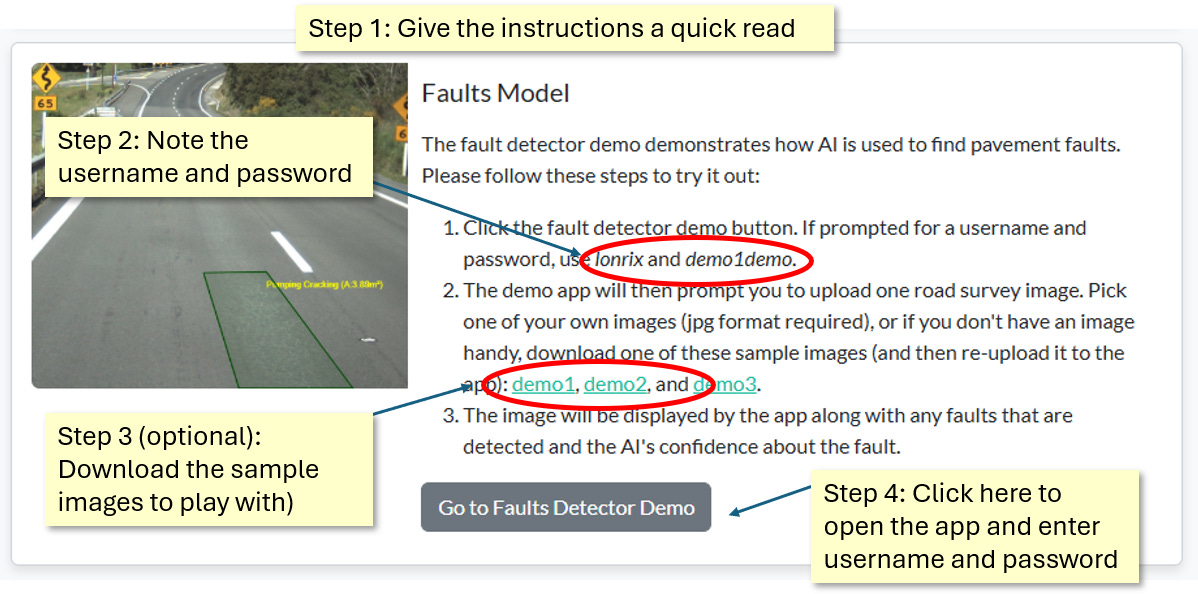Exploring Juno Intelligence
A demo application to explore distress inferencing with Juno Intelligence
One of my greatest sources of pride as a founder of Lonrix is witnessing the remarkable progress our team has made in AI Image Recognition. Starting from scratch, we have taken on large corporate competitors and—through sheer effort and innovation—Lonrix is now recognised as a global leader in AI-driven image recognition for Infrastructure Asset Management.
If you're curious to see our inferencing engine in action, you can explore our demo tool on the Juno Betas site. For the best experience, I recommend using Google Chrome on a desktop or laptop.
A huge thanks to our Principal AI Scientist, Dr. Michael Mayo, for developing this demo!
To try it out:
Visit the Juno Betas site.
Scroll down to the Fault Detection section.
Follow the on-screen instructions as shown below:
Once you are in the app, you will see further instructions as shown below. You can drag the example image onto the Drag-and-Drop area, or drag one of your own images to the Drag-and-Drop area.
It is interesting to play around with the detection threshold to see how it influences the distress detection.
Below is a 3 minute walk-through video to demonstrate the use of the demo app:
For network-level (or even project-level) applications, running inference on images one by one is impractical. This is where the Juno Intelligence (JI) Framework comes in. More than just an inferencing engine, the JI Framework includes a suite of innovative tools and workflows designed to streamline the entire process:
Effortless video capture – The JunoViewer phone app provides on-screen guidance for optimal video angles and calibration of detection areas.
Automated video processing – Captured videos are automatically split into images, resized, and enriched with GPS and other metadata before being uploaded to our storage servers.
Batch inferencing – All images associated with uploaded videos undergo automated batch inferencing.
Distress data extraction and logging – Identified distress types, locations, areas, and lengths are securely logged in a database and can be accessed via our API.
For users integrating the JI Framework with a JunoViewer application, inferenced distress data can be seamlessly linked to your database, enabling visualisation in strip-maps and video viewers alongside other key datasets—such as high-speed rut and roughness data, surfacing, and pavement information.





